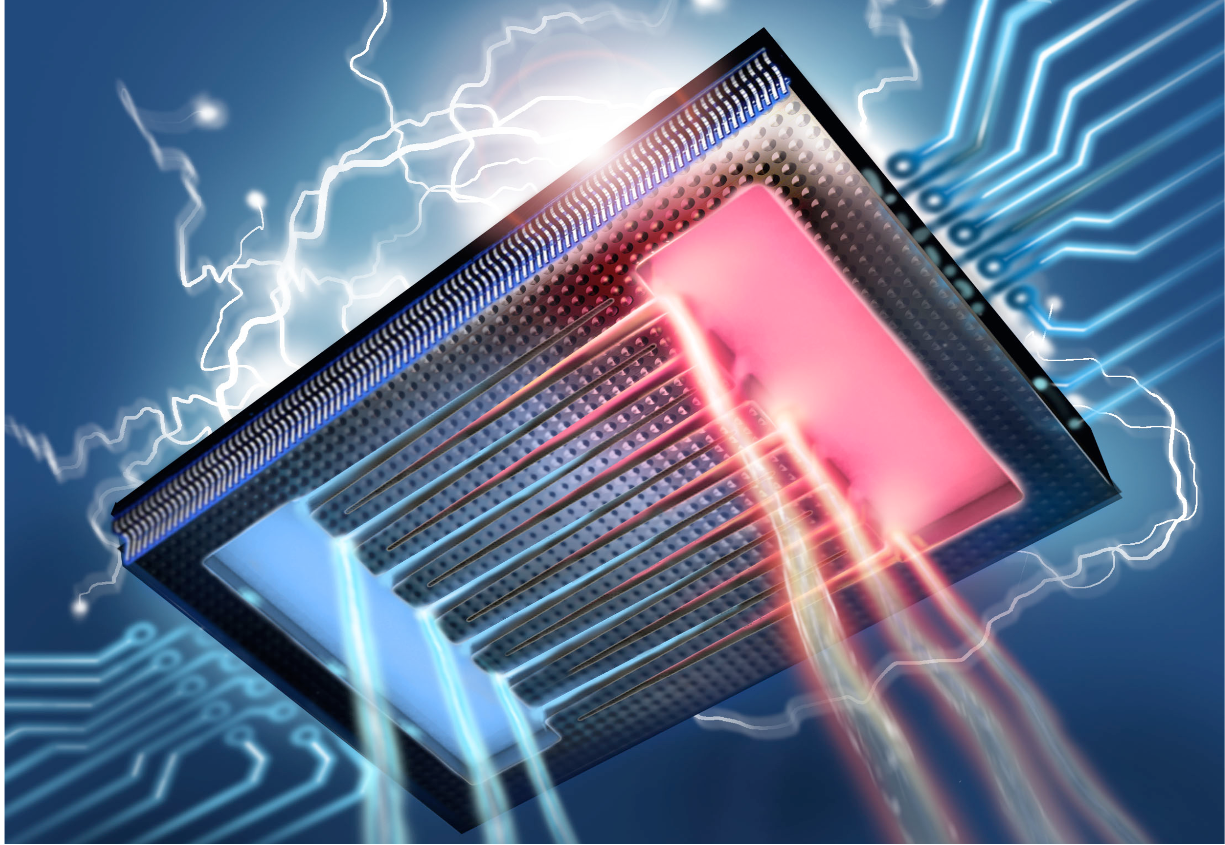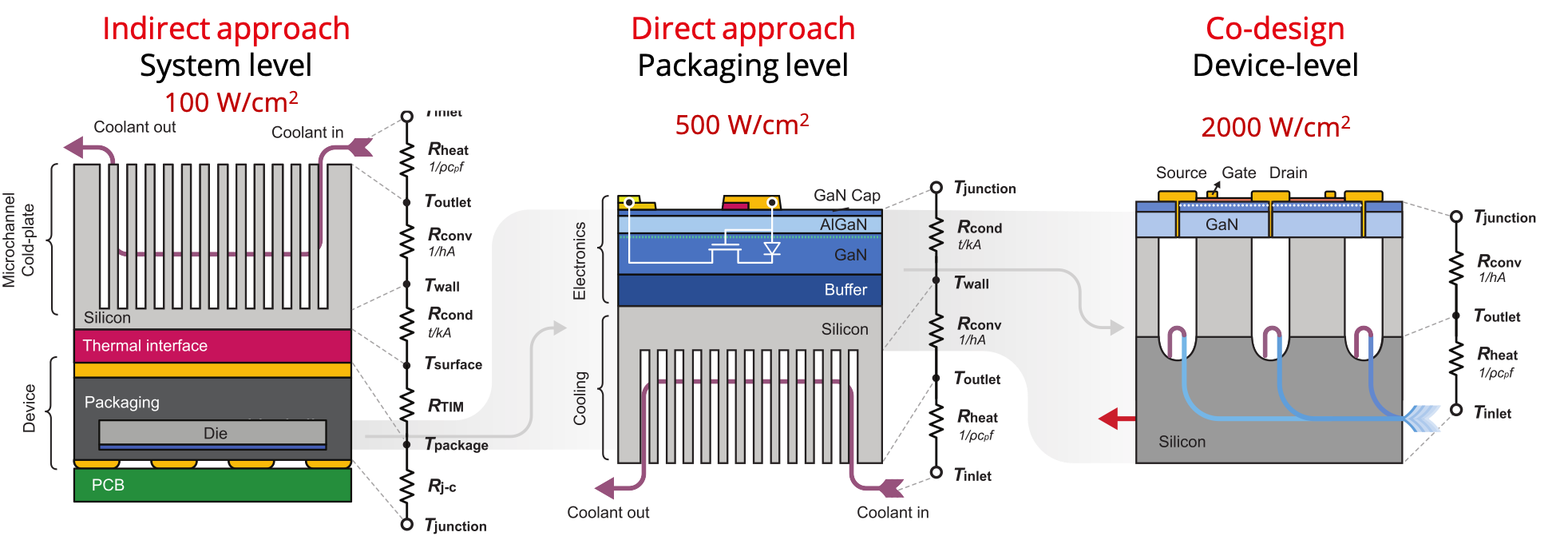Microfluidic cooling of electronics

Liquid cooling embedded inside the GaN electronic device
Thermal management is one of the main challenges for the future of electronics. With the ever-increasing rate of data generation and communication, as well as the constant push to reduce volume and costs of converter systems, the power density of electronics rises. Consequently, cooling has an increasingly large environmental impact, and new technologies are needed to efficiently handle the heat in a sustainable and cost-effective way. Embedding liquid cooling directly inside the chip is a promising approach for a more efficient thermal management. However, even in state-of-the-art approaches, the electronics and cooling are treated separately, leaving the full energy-saving potential of embedded cooling untapped.
Our group investigates the applications of microfluidic cooling to electronic devices within 3 different approaches: indirect approach, direct approach and co-design of cooling and electronics.

For example, we demonstrated that co-designing microfluidics and electronics into the same semiconductor substrate, to produce a monolithically-integrated manifold microchannel (mMMC) cooling structure, provides efficiency beyond the state-of-the-art. Our results show that heat fluxes exceeding 1.7 kW/cm2 can be cooled down using only 0.57 W/cm2 of pumping power. We observed an unprecedented coefficient of performance (>104) for single-phase water-cooling of heat fluxes exceeding 1 kW/cm2, corresponding to a 50-fold increase compared to straight microchannels, as well as a remarkably high average Nusselt number of 16.
The proposed cooling technology enables further miniaturization of electronics, potentially extending Moore’s law and greatly reducing energy consumption worldwide. Furthermore, by removing the need for large external heat sinks, we demonstrate how this approach enables ultra-compact power converters integrated on a single chip, supporting the electrification trend of our society.
This work was published in Nature (Sept. 2020), and has been covered in many news outlets, such as: Scientific American, Le Figaro, Le Temps, NRC, IEEE Spectrum, New Scientist, Nature podcast, Olhar Digital, RTS
Relevant publications:
- R. Van Erp, R. Soleimanzadeh, L. Nela, G. Kampitsis, E. Matioli, “Co-designing electronics with microfluidics for more sustainable cooling”, Nature, 2020
- R. Van Erp, G. Kampitsis, E. Matioli, “Efficient microchannel cooling of multiple power devices with compact flow distribution for high power-density converters” IEEE Transactions on Power Electronics, 2020
- L. Nela, R. Van Erp, N. Perera, A. Jafari, C. Erine and E. Matioli, “Impact of Embedded Liquid Cooling on the Electrical Characteristics of GaN-on-Si Power Transistors“ IEEE Electron Device Letters, 2021
- R van Erp, G Kampitsis, L Nela, RS Ardebili, E Matioli,”Embedded microchannel cooling for high power-density GaN-on-Si power integrated circuits,” 19th IEEE Intersociety Conference on Thermal and Thermomechanical Phenomena in Electronic Systems (ITherm), 2020